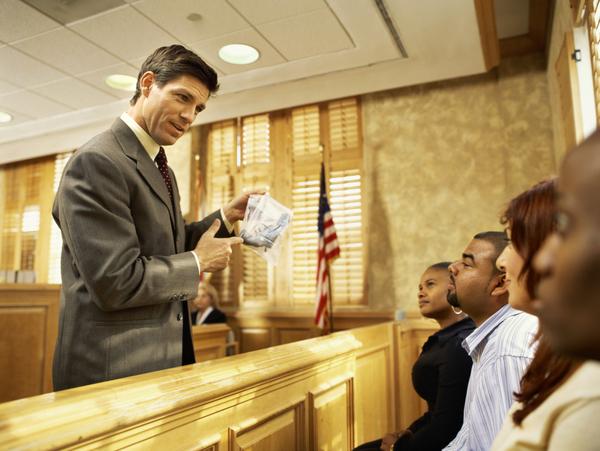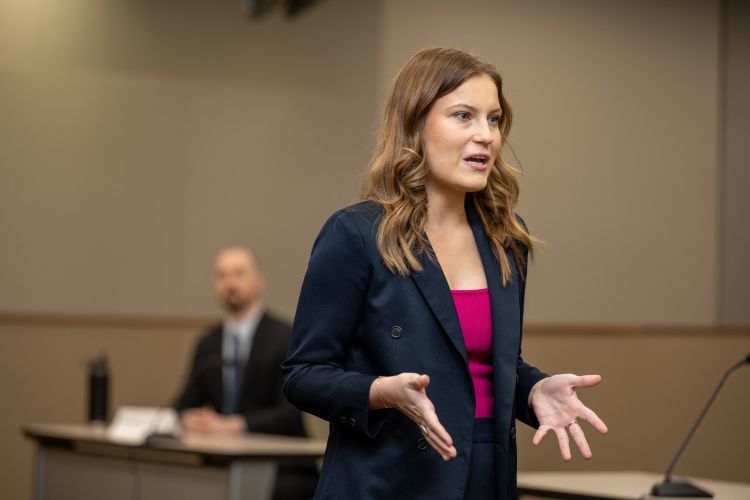From Idea to Court: Actions to Create Effective and Persuading Trial Presentations
Wiki Article
Browsing the Complexities of Trial Presentations: Tips for Seamless Distribution and Compelling Arguments
In the realm of lawful procedures, the art of trial presentation stands as an important factor of success. As lawyers browse the elaborate web of court characteristics, the ability to effortlessly provide debates and evidence while captivating the court's interest comes to be extremely important. The intricacies inherent in trial presentations need a fragile balance of skill, approach, and finesse. By sharpening strategies that make certain a refined shipment and crafting engaging arguments that resonate with the audience, lawyers can significantly improve their advocacy. In a world where persuasion reigns supreme, grasping the ins and outs of test discussions is not merely an alternative however a necessity for those looking for to dominate in the court.
Recognizing Trial Objectives
To efficiently browse a trial, it is crucial to have a clear understanding of the objectives that need to be attained. Prior to entering the court room, lawful teams need to specify their objectives and desired outcomes. These purposes act as guiding concepts throughout the trial, shaping approaches and influencing decision-making processes.Comprehending test purposes includes a comprehensive evaluation of the instance, legal precedents, and the customer's best passions. Trial Presentations. It calls for a precise evaluation of the realities, recognizing key problems, and expecting prospective difficulties. By establishing quantifiable and certain objectives, lawyers can tailor their arguments and presentations to align with the desired outcomes
Moreover, a clear understanding of test purposes enables legal teams to focus on evidence, witnesses, and legal arguments properly. It enables the advancement of a meaningful story that resonates with the discretionary, strengthening the overall instance presentation.

Organizing Evidence Efficiently
Having a clear understanding of test objectives lays the foundation for arranging evidence effectively in legal procedures. By lining up the discussion of proof with the preferred results of the test, legal groups can strengthen their arguments and enhance their persuasiveness.One more crucial element in arranging evidence efficiently is developing a rational flow. Offering evidence in a coherent and consecutive manner can assist build a compelling narrative that sustains the lawful debates being made. Furthermore, using visual help such as charts, charts, or timelines can further improve the organization of evidence and assist in clearing up complicated partnerships or series of occasions.
Furthermore, making sure that all evidence offered is pertinent and permissible to the situation is essential. Inadmissible or unimportant proof can interfere with the stamina of the debate and Find Out More possibly harm the reputation of today celebration. A precise evaluation and choice procedure need to be taken on to consist of just the most legally sound and impactful evidence in the test discussion.
Crafting Influential Stories
Crafting compelling stories plays an essential duty in offering convincing arguments throughout legal process. When building a narrative for a test presentation, it is crucial to develop a clear storyline that highlights vital points and attaches them in a meaningful fashion. By weaving with each other evidence, testament, and legal debates into a influential and cohesive story, legal specialists can efficiently support for their customers and boost the likelihood of a positive outcome in the court.
Mastering Aesthetic Help
Effective use visual aids is vital to enhancing the effect and quality of trial presentations. Aesthetic aids, when used purposefully, have the power to streamline intricate info, reinforce bottom lines, and leave a long lasting impact on the discretionary. To master aesthetic help in trial presentations, it is critical to ensure that they are clear, concise, and pertinent to the disagreements being made.When integrating aesthetic aids, such as graphes, timelines, photos, or charts, right into a test presentation, it is vital to maintain them aesthetically appealing yet specialist. The visuals should complement the verbal disagreements, supplying a graph of the details being reviewed without overwhelming the audience with unnecessary details.
Moreover, exercising with the visual aids beforehand is necessary to make certain a smooth distribution throughout the test. Acquainting oneself with the material, shifts, and timings of each more information visual aid can help maintain the flow of the discussion and prevent technological problems that might develop.
Providing Impactful Closing Disagreements
A compelling closing argument works as the end result of a test discussion, encapsulating the core narrative and encouraging the court and court towards a beneficial decision. To supply an impactful closing debate, it is vital to succinctly evaluate bottom lines, highlight the toughness of your situation, and attend to any weak points in a calculated way. Begin by outlining the major disagreements that support your customer's setting, emphasizing why the proof provided throughout the trial sustains your narrative. It is important to develop a sense of communication and clearness, guiding the court and jury in the direction of the preferred conclusion.In addition, including psychological appeal can better strengthen your closing argument. Eventually, a well-crafted closing disagreement need to leave a long-term impression, compelling the judge and jury to rule in your client's favor.
Final Thought
In final thought, understanding trial presentations includes comprehending purposes, arranging proof, crafting stories, making use of aesthetic help, and providing impactful closing debates. By applying these approaches effectively, lawyers can present their case perfectly and make engaging debates in the court room. It is vital to navigate the complexities of trial presentations with accuracy and ability to accomplish success in legal process.By straightening the discussion of proof with the preferred results of the trial, lawful groups can reinforce their arguments and enhance their persuasiveness (Trial Presentations). To understand visual help in trial presentations, More about the author it is important to guarantee that they are clear, succinct, and appropriate to the arguments being made
An engaging closing argument offers as the conclusion of a trial presentation, enveloping the core story and persuading the judge and jury towards a favorable decision. Begin by describing the primary arguments that sustain your customer's position, stressing why the proof presented throughout the test sustains your narrative.In conclusion, understanding test presentations entails comprehending objectives, arranging evidence, crafting stories, utilizing aesthetic aids, and supplying impactful closing disagreements.
Report this wiki page